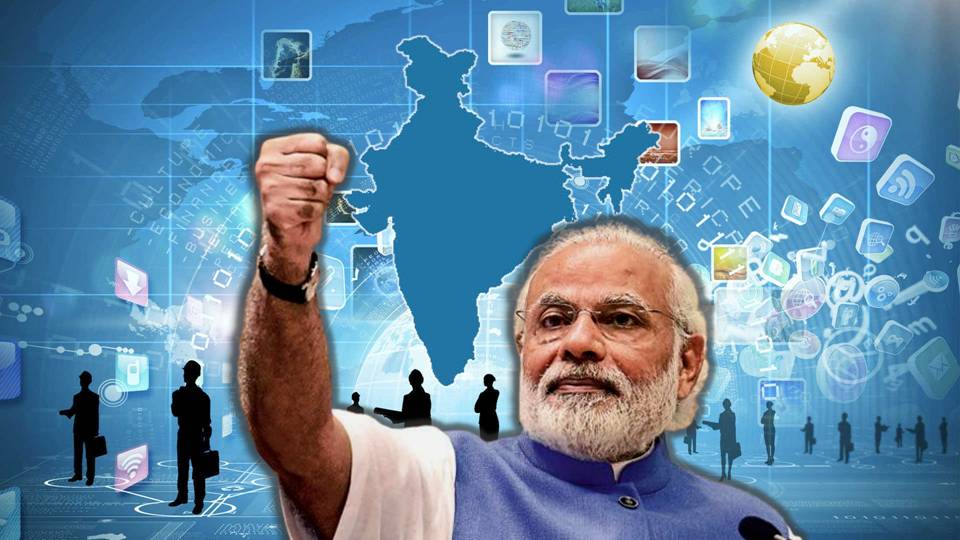In July 2015, the government of India launched the Digital India initiative with the aim to transform India into a digitally enabled knowledge-based economy. With the guiding philosophy of accessibility, affordability, and usefulness, Digital India envisaged empowering its citizens with digital infrastructure.
A Deloitte India report suggests that India will have 1 billion smartphone users by 2026, and in the next five years, the country will be the second-largest smartphone manufacturer. The Digital revolution started in India has begun to take shape and is contributing immensely to the growth of the country. According to another report, 68% of Indians are below the age of 40 and 70% of them are already using the internet.
$1 trillion Digital Economy
At BRICS Business Forum on 22nd June 2022, Prime Minister Modi addressing the opening ceremony said that India’s digital sector valuation is going to cross $1 trillion by 2025.
The emphasis becomes very important with the fact that the government has already set the plan to make India a $5 trillion economy and a global economic powerhouse by 2024-25. With systemic reforms like GST, IBC (Insolvency and Bankruptcy Code), Startups India, Labour Code, JAM (Jan- -Mobile), and Digital India, the government has already set the tone that the road to $5 trillion will go through the digital transformation of India.
Further, 1.2 billion Aadhaar users, 560 million internet users, 350 million smartphone devices, 8.3 Gb per month of data consumption per data subscriber, and the lowest cost per Gb of data have enabled the way forward for the $1 trillion digital economy for India.
Read More: PM Modi’s vision for Digital India is now bearing fruit
Pro-people schemes and a $1 trillion digital economy
The overall growth cannot be expected till the foundations of the economy are not strong. With the systematic reforms in the digitalisation of India, India’s GDP has grown from $2 trillion in 2014 to $3.05 trillion in 2022. In the last 7 years, India’s GDP has grown by 50%.
If we analyze India’s recent economic growth trajectory, the driving force has been inclusive digital expansion. In recent years, the foundation of digital expansion was led by the government in the form of e-government platforms, internet affordability, and deep penetration of mobile infrastructure. It increased the digital reach of India in the form of devices, data, and digital content, which created digital values like e-services, purchases, social media, and digital payments.
The global leader in the creation of digital identity, public digital platforms, and data utilities, India is the digital factory for the world. The country’s education, agriculture, health, transportation, finance, business, and commerce have been linked with the internet and expanding the Indian economy in exponential terms.
Read More: With Rs.19,041 Cr BharatNet Project in 16 States, Digital India moves towards Bharat from India
Not only startups and entrepreneurship are being dominated in the tech sector but traditional industries have also benefited from the digital infrastructure. The data analysis of customers has become easy. Now companies can target their customers according to publicly presented data and cater to their demands in a more effective way.
Currently, India is one of the biggest and fastest-growing digital markets in the world. The inclusive digital expansion has democratized the growth opportunity in India. With smartphone and internet connectivity, an individual can start a business and sell his products all over the country. Digital expansion has enabled the exponential growth trajectory and a $1 trillion dollar digital economy is not a distant dream for India.
Support TFI:
Support us to strengthen the ‘Right’ ideology of cultural nationalism by purchasing the best quality garments from TFI-STORE.COM.
Also Watch:
